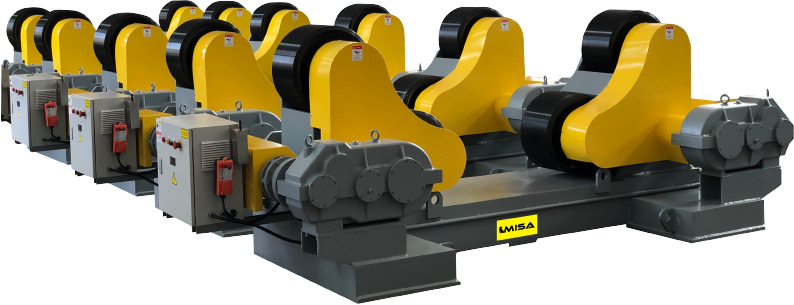


.png)
.png)
.png)


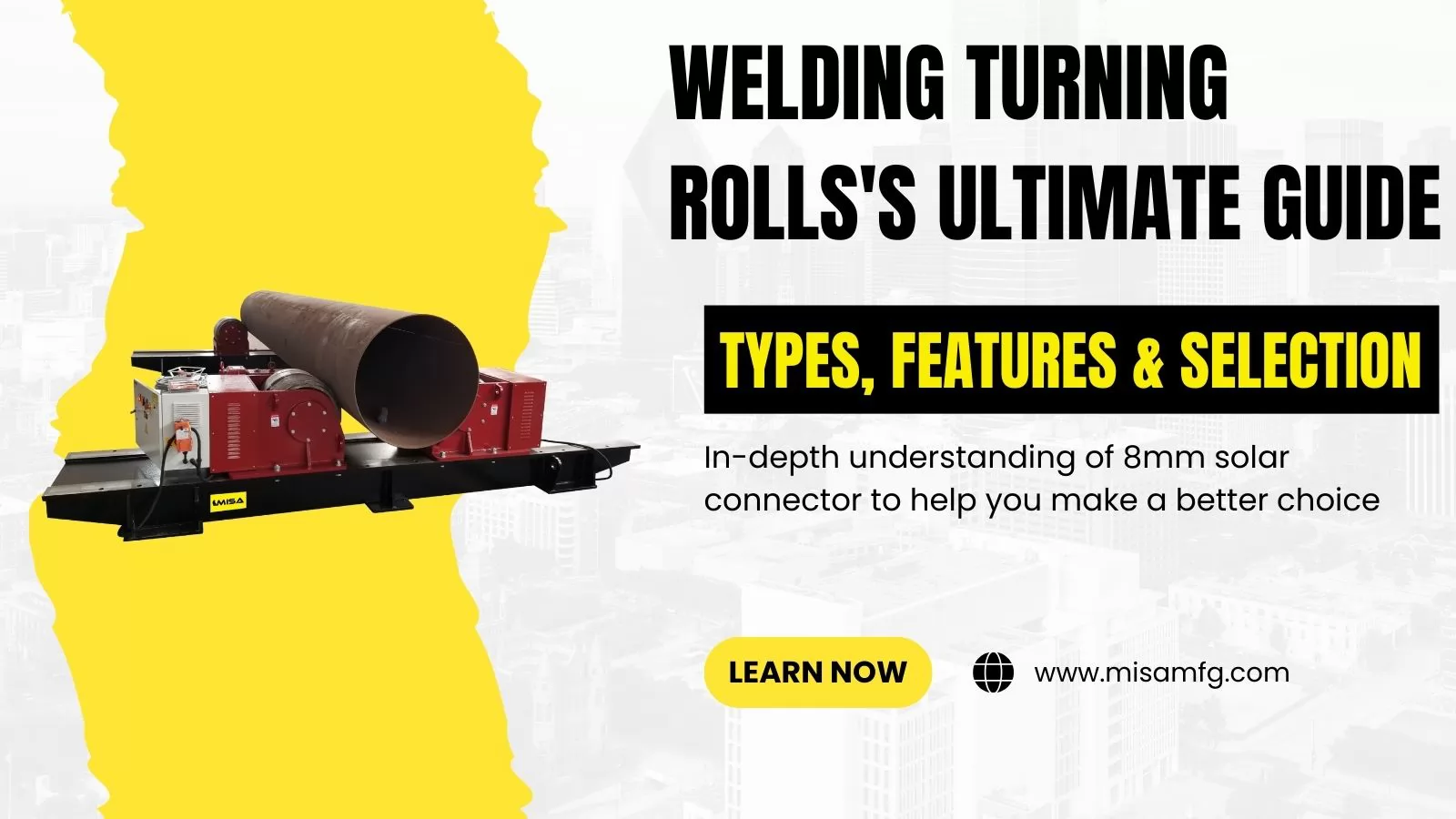
Welding turning rolls—also known as tank turning rolls or pipe rollers—are essential equipment used for rotating cylindrical workpieces such as tanks, pipes, and vessels during welding. By providing controlled rotation, these systems enhance welding precision, reduce manual handling, and significantly boost operational safety and productivity. Whether you're in fabrication, shipbuilding, or energy sectors, understanding the different types and uses of welding turning rolls can help you optimize your workflow and equipment investment. This guide offers a complete breakdown of their functionality, applications, benefits, top manufacturers, market trends, and how to choose the right model for your needs in 2025.
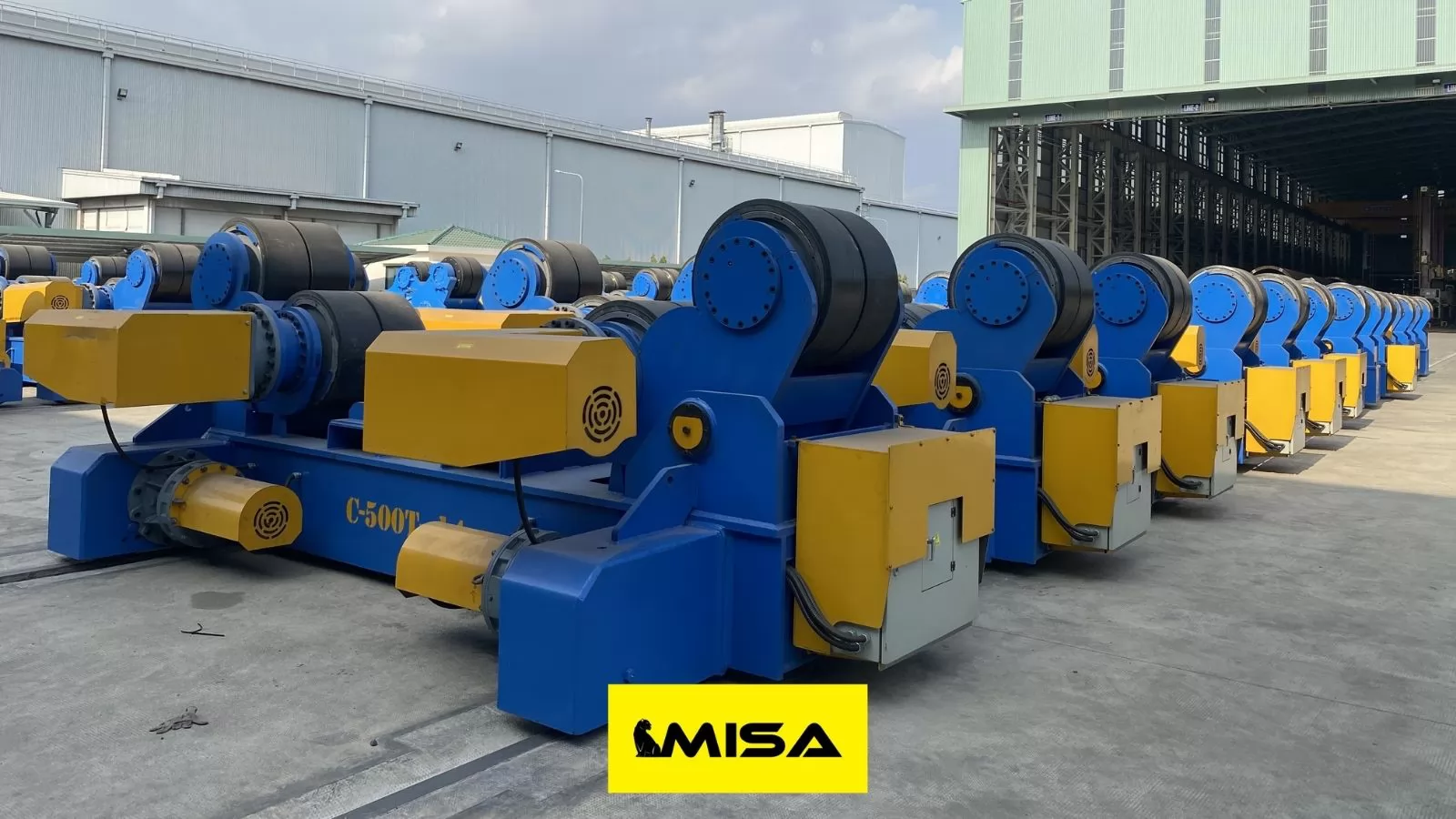
Welding turning rolls are motorized or manually adjustable rotating platforms designed to support and rotate cylindrical workpieces during the welding process. Typically consisting of a drive unit and one or more idler units, these tools are critical in handling heavy, round components such as pipes, pressure vessels, and tanks. Their primary function is to ensure a consistent rotation of the workpiece, allowing welders to perform continuous, uniform welds without constantly repositioning the object.
These systems are especially valuable in industries where precision and efficiency are vital, including petrochemical, shipbuilding, boiler manufacturing, and wind turbine assembly. By minimizing manual intervention, welding turning rolls not only reduce the risk of human error and injury but also significantly increase the throughput of welding operations. They are compatible with a range of welding techniques, including submerged arc welding (SAW), TIG, MIG, and robotic automation systems.
Welding turning rolls come in various configurations to accommodate different sizes, shapes, and materials of workpieces. The right choice depends on the specific production needs, load requirements, and automation level. Below are the main types of turning rolls used in industrial welding settings.
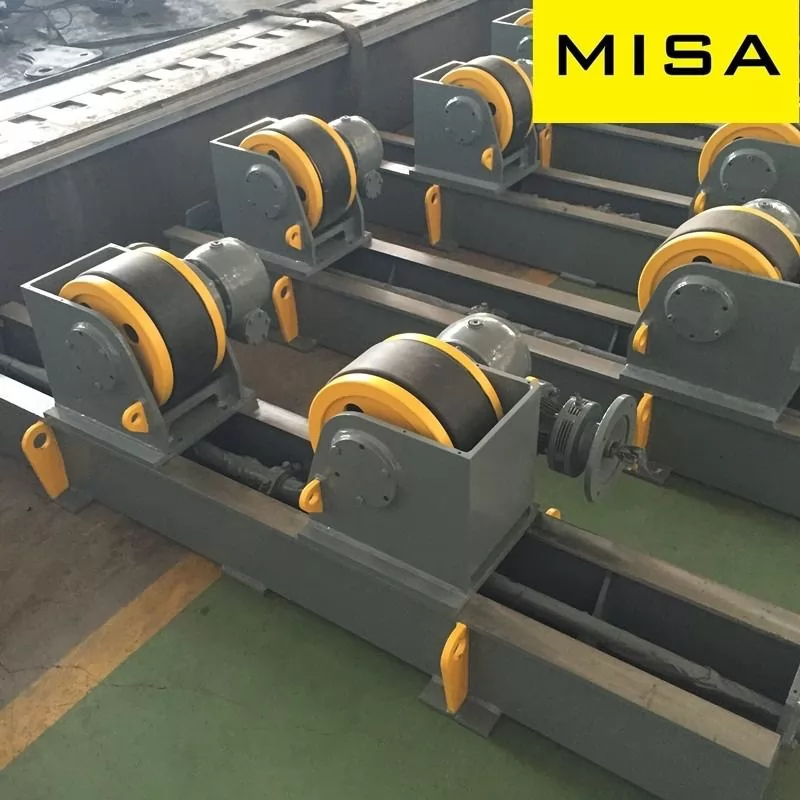
Standard turning rolls are the most commonly used type, equipped with manually adjustable wheels to handle a wide range of cylinder diameters. They are a practical and cost-effective solution for general welding tasks where the workpiece dimensions are relatively stable.
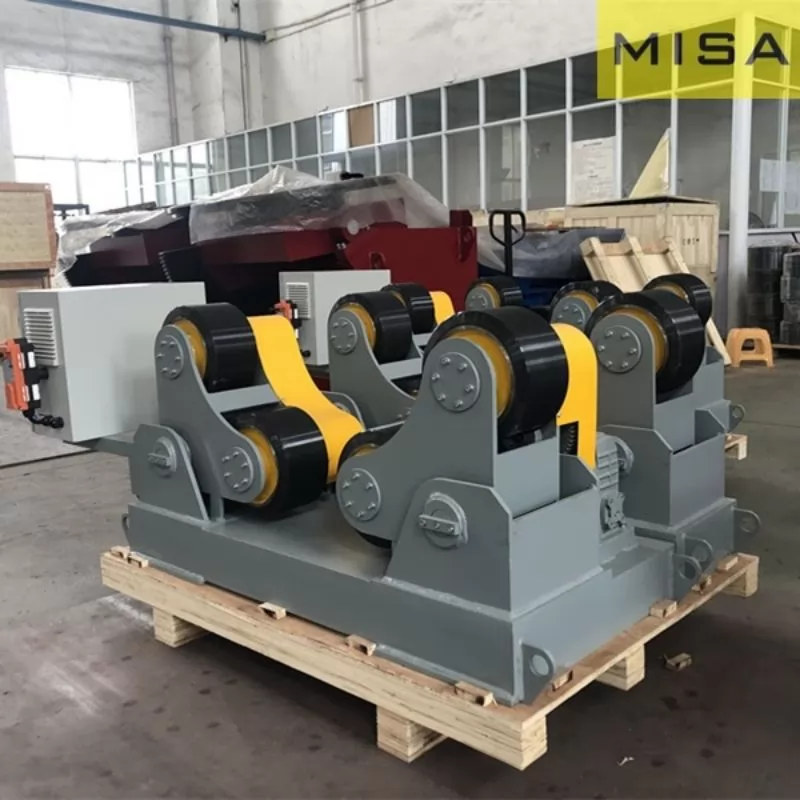
Self-aligning turning rolls automatically adjust to the diameter of the workpiece without requiring manual intervention. This feature makes them highly efficient in operations dealing with varying tank or pipe sizes.
These specialized rolls are used when maintaining a fixed welding torch position is critical or when vertical adjustment is necessary to match different fabrication setups.
Anti-drift rolls are engineered to prevent axial movement or "creep" of the workpiece during rotation. This ensures precise weld seam tracking and is critical in high-accuracy welding jobs.
| / | Standard Turning Rolls | Self-Aligning Turning Rolls | Anti-Drift Turning Rolls | PLC-Controlled Turning Rolls |
|---|---|---|---|---|
| Adjustment Method | Manual adjustment | Automatic self-aligning | Automatic with axial positioning | Automatic with programmable control |
| Suitable Workpiece Diameter | Fixed or limited range | Wide and variable diameter range | Medium to large diameters requiring high stability | Wide range with high repeatability |
| Load Capacity Range | Low to medium | Medium to heavy | Heavy to extra-heavy | Medium to extra-heavy |
| Rotation Stability | Moderate | High | Very high (prevents axial movement) | Very high (precision controlled) |
| Axial Drift Control | Not included | Limited | Yes (mechanical or hydraulic anti-drift) | Yes (sensor- or logic-based control) |
| Drive System | AC motor with basic reducer | AC motor with flexible drive | Dual-drive or synchronized drive | Servo or inverter-controlled drive |
| Speed Control | Basic variable speed | Variable speed | Precise variable speed | High-precision programmable speed |
| Automation Level | Low | Medium | Medium to high | High |
| Operator Skill Requirement | Higher (manual setup) | Moderate | Moderate | Lower after setup |
| Typical Applications | Small tanks, pipes with consistent sizes | Vessels with varying diameters | Long vessels, pressure vessels, heavy shells | Automated welding lines, robotic welding |
| Best Use Scenario | Cost-sensitive projects with fixed specs | Frequent size changes | High-precision and safety-critical welding | High-volume production and automation |
| Initial Equipment Cost | Low | Medium | Medium to high | High |
| Maintenance Complexity | Low | Low to medium | Medium | Medium to high |
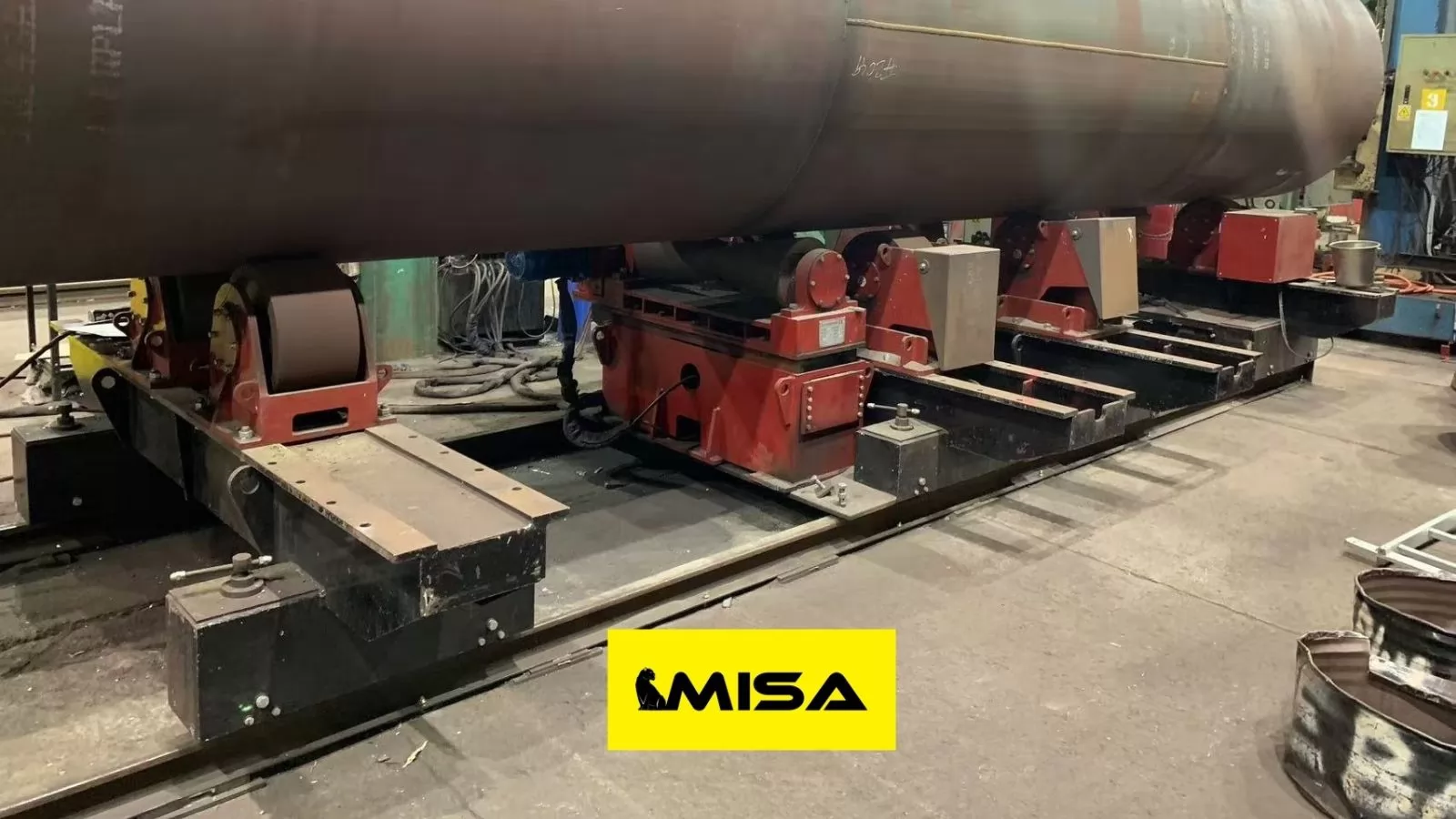
Welding turning rolls operate on a simple yet powerful principle—rotational positioning. A typical setup consists of a drive roll powered by an electric or hydraulic motor and one or more idler rolls that support the load. When a cylindrical workpiece such as a tank or pipe is placed on the rolls, the drive roll initiates controlled rotation. The welder or robotic torch then performs the weld as the object turns, eliminating the need to reposition it manually.
The rotational speed can be adjusted using variable frequency drives (VFDs) to suit different welding processes, such as Submerged Arc Welding (SAW), Tungsten Inert Gas (TIG), or Metal Inert Gas (MIG) welding. This results in a smooth, continuous weld and greater process control.
Integrating welding turning rolls into your production line provides several operational and strategic advantages:
Welding turning rolls are indispensable across various heavy industries where rotating cylindrical components is essential for high-quality, efficient welding. Their ability to support and rotate massive workpieces makes them a go-to solution in sectors requiring precision, productivity, and safety.
In the oil and gas industry, turning rolls are used to weld pipes of varying diameters and lengths. The ability to rotate the pipeline ensures smooth, uninterrupted weld seams and reduces welding errors caused by misalignment or inconsistent rotation.
For the production of boilers, storage tanks, and pressure vessels, turning rolls allow uniform welding around the circumference of the container. This is crucial in industries such as chemical processing and water treatment where structural integrity is non-negotiable.
Shipbuilders rely on turning rolls to handle bulky hull sections, ballast tanks, and tubular substructures. These applications demand heavy-duty equipment capable of withstanding marine-grade fabrication loads.
In both conventional power plants and renewable energy installations, turning rolls are used for components such as steam drums, pressure cylinders, and wind turbine towers. They enable precision welding at a high rate of productivity.
Any manufacturing environment that involves cylindrical workpieces can benefit from welding turning rolls. This includes HVAC equipment, food-grade tanks, silos, and industrial containers.
Selecting the ideal welding turning rolls for your operation requires a careful evaluation of technical specifications, operational goals, and safety requirements. Choosing the right model not only optimizes welding performance but also minimizes downtime and enhances workplace safety.
Always match the turning roll’s load rating to the weight of your heaviest workpiece. Load capacities range from 2,000 lbs for small units to over 180 tons for industrial-scale applications.
Choose a system that can accommodate the smallest and largest diameters in your product lineup. Self-aligning rolls are better suited for varied diameter ranges, whereas standard rolls require manual adjustment.
Variable speed control ensures weld consistency and allows adaptation to different welding processes. Look for systems with:
Welding environments are harsh, with exposure to heat, slag, and vibration. Opt for machines made from high-grade steel or cast iron with protective coatings and sealed bearings.
Safety is non-negotiable in welding operations. Prioritize models with built-in safety mechanisms such as:
If your facility uses robotic welding arms or CNC control systems, ensure the turning rolls can integrate seamlessly through programmable logic controllers (PLCs) or custom automation modules.
While upfront cost matters, consider the total cost of ownership (TCO), including maintenance, energy usage, and potential productivity gains. A higher initial investment often delivers better long-term ROI.
When investing in welding turning rolls, choosing a reputable manufacturer ensures product reliability, technical support, and availability of spare parts. Below are some of the most respected names in the industry:
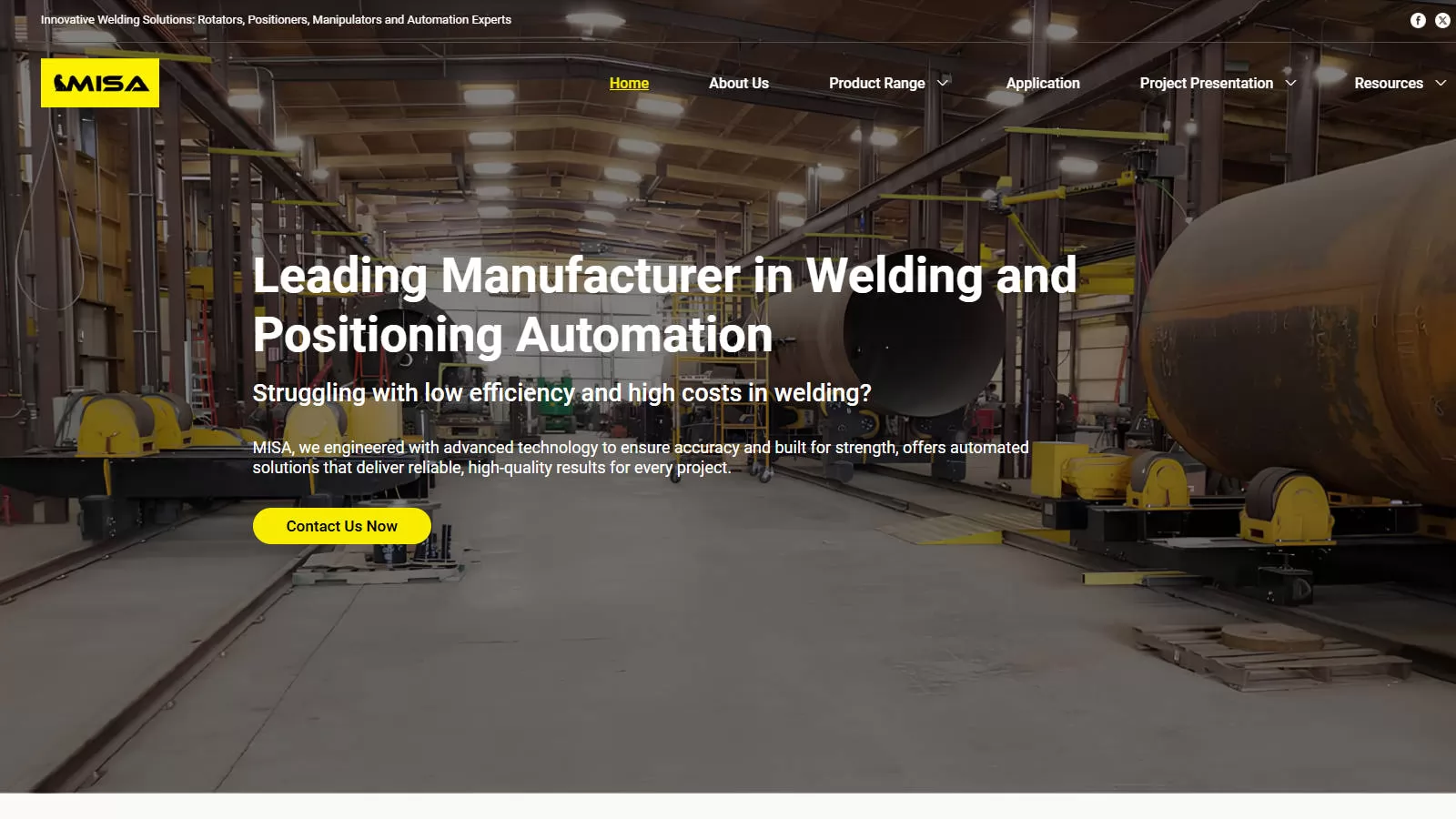
Among the leading manufacturers in the welding equipment industry, MISA Welding (Wuxi) Co., Ltd. stands out as a global innovator and trusted supplier of high-quality welding turning rolls and automation solutions. Established in 1992 and headquartered in Wuxi, China, approximately 180 km from Shanghai Pudong International Airport and Shanghai Port, MISA has over three decades of experience delivering cutting-edge welding and positioning equipment to industries worldwide. With a commitment to “quality first, customer supreme, efficiency first, and service supreme,” MISA has built a stellar reputation for reliability, customization, and technical excellence, making it a top choice for businesses seeking advanced welding turning rolls.
MISA specializes in designing and manufacturing a diverse range of welding turning rolls, including conventional welding rotators, self-aligning welding rotators, fit-up rotators, and anti-drift rotators, with load capacities ranging from 2 tons to an impressive 2000 tons and pipe diameter compatibility from 150 mm to 15,000 mm. These rotators are engineered for applications across industries such as automotive, aerospace, shipbuilding, oil and gas, wind energy, pressure vessel manufacturing, and general fabrication. Key features include:
In addition to welding rotators, MISA’s portfolio includes welding positioners, welding manipulators, CNC cutting machines, H-beam production lines, and auxiliary systems like flux recovery systems, seam trackers, and CCTV monitoring, providing a holistic approach to welding automation.
MISA’s global presence is underpinned by over 15 years of export experience, enabling the company to meet diverse international standards, including electrical requirements, voltage, and safety regulations. With CE certifications for all welding positioners and ISO 9001 compliance, MISA ensures its products adhere to rigorous quality and safety benchmarks. The company has collaborated with renowned enterprises across more than 21 countries, serving sectors like oceanic engineering, shipyards, wind turbines, and pressure vessel fabrication, earning trust for its ability to deliver high-performance equipment tailored to specific project needs.
MISA’s state-of-the-art manufacturing facilities in Wuxi, coupled with a professional design team, allow for rapid prototyping and customization. Equipment is trial-operated before delivery to guarantee seamless functionality upon arrival, and some models are delivered as whole units, requiring only power connection for immediate use. For larger systems, MISA provides disassembled delivery with detailed installation support, including on-site commissioning and training within 5-7 working days of customer feedback.
At the core of MISA’s success is its dedicated research and development (R&D) team, which continuously integrates the latest advancements in welding technology, such as robotic welding, laser welding, and deep penetration TIG (DP-TIG) processes, to enhance product performance. This innovation-driven approach ensures MISA’s turning rolls are future-ready, supporting emerging trends like smart automation and Industry 4.0 integration. For example, MISA’s rotators can be equipped with advanced features like programmable cross slides, seam tracking, and flux recovery systems for submerged arc welding (SAW), optimizing precision and efficiency in complex applications.
MISA prioritizes customer satisfaction through a robust pre-sales and after-sales service framework. The company’s technical team responds to inquiries within 2 hours via email or phone, providing tailored solutions to production challenges. Post-delivery, MISA offers lifelong technical support beyond the standard warranty period, with replacement parts shipped within 48 hours to minimize downtime. Regular maintenance reminders every six months help customers extend equipment lifespan, while proper operation guidelines ensure maximum value. MISA’s customer-centric philosophy is evident in its ability to customize equipment for unique workpieces, such as designing T-slots or special fixtures for irregular shapes, ensuring seamless integration into diverse workflows.
MISA’s strategic location in China, combined with access to cost-effective raw materials, allows the company to offer premium-quality welding turning rolls at competitive prices, often outperforming Western manufacturers in cost-efficiency without compromising quality. Prices for MISA’s welding rotators typically range from $2,000 to $50,000, depending on load capacity, features, and customization, making them accessible for both small-scale operations and large industrial projects. Unlike some competitors, MISA’s holistic approach—covering design, manufacturing, and after-sales service—ensures a seamless experience, from initial consultation to long-term equipment maintenance.
Choosing MISA Welding means partnering with a manufacturer that combines engineering excellence, global accessibility, and customer-focused innovation. With a proven track record of delivering reliable, high-performance welding turning rolls, MISA empowers businesses to achieve superior weld quality, enhanced productivity, and operational safety. Whether you need a lightweight rotator for small pipes or a heavy-duty system for wind tower fabrication, MISA’s customizable solutions, backed by industry-leading support, ensure your welding processes are optimized for success. For businesses looking to elevate their welding capabilities in 2025 and beyond, MISA Welding (Wuxi) Co., Ltd. is a strategic partner that delivers unmatched value and performance.
For more information or to request a quote, visit MISA Welding’s official website or contact their sales team directly.
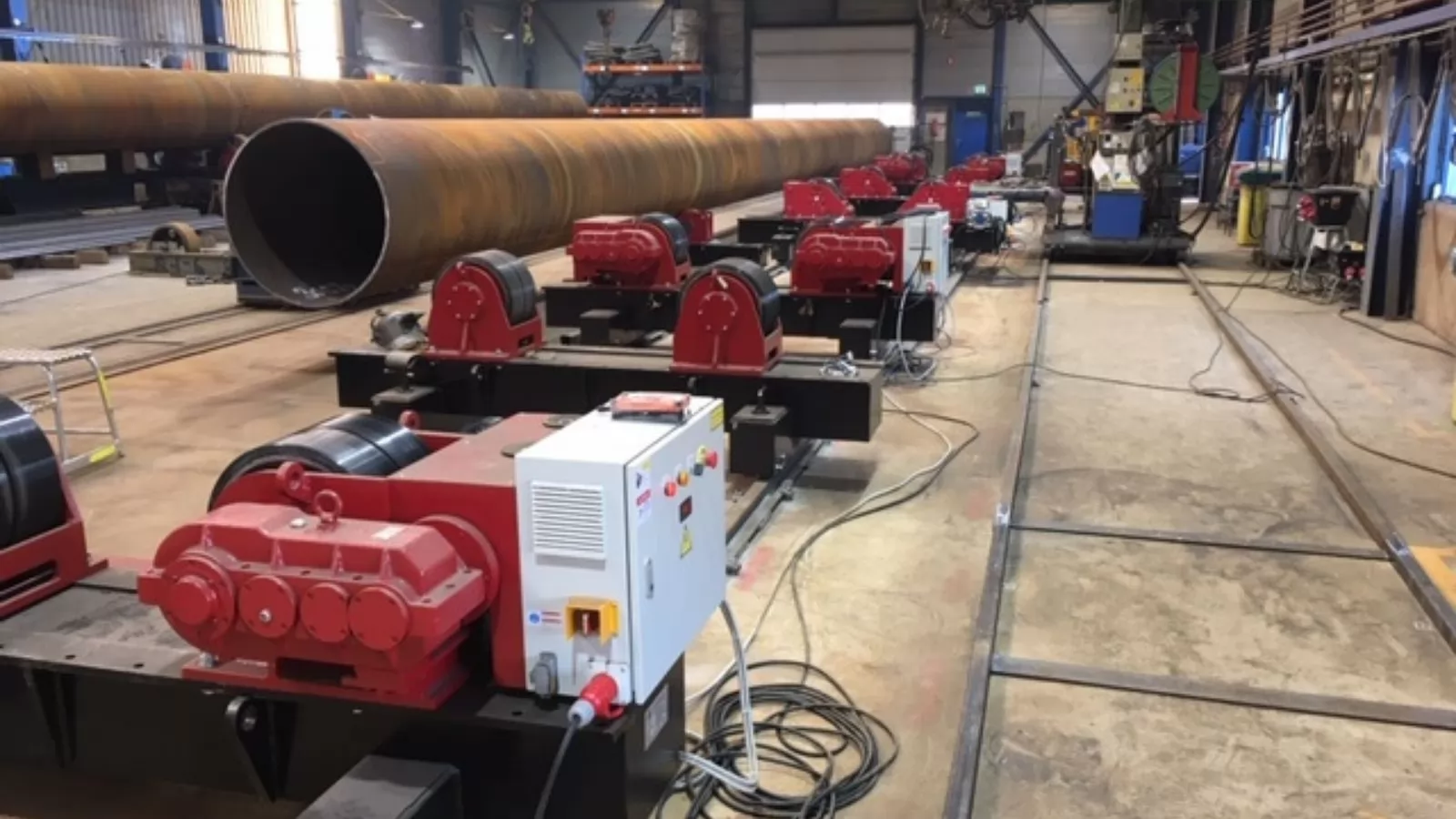
Regular maintenance of welding turning rolls ensures optimal performance, minimizes downtime, and extends equipment lifespan. Whether operating in high-volume environments or intermittent production, the following practices are essential:
Ensuring operator safety is paramount in any welding operation. Turning rolls introduce rotational hazards, high temperatures, and heavy loads, making safety training and protocols non-negotiable:
| Maintenance Task | Corresponding Safety Measure |
|---|---|
| Inspect wheels and motor for wear | Ensure workpiece is secured before inspection |
| Lubricate drive components | Lock out electrical power during service |
| Test control panels and emergency stops | Have a trained technician perform diagnostics |
| Tighten bolts and check structural integrity | Wear gloves and use proper hand tools |
| Clean and organize work area | Remove trip hazards and flammable materials |
Welding turning rolls are a long-term investment, and understanding their pricing structure and financial impact is crucial for any industrial buyer or procurement team. Costs vary widely depending on capacity, features, materials, and brand reputation. However, the return on investment (ROI) can be substantial when aligned with the right application.
Note: These prices exclude customizations, freight, installation, and warranty packages. Always request detailed quotes from multiple manufacturers for accurate budgeting.
While the initial investment can seem significant, welding turning rolls often pay for themselves quickly in high-volume operations. Here's how:
In summary, carefully matching machine specs with your operation's scale and complexity ensures both cost efficiency and high performance. A well-chosen turning roll system will continue delivering value for many years with minimal maintenance and high uptime.
Welding turning rolls are used to support, rotate, and position cylindrical workpieces such as tanks, pipes, pressure vessels, and shells during welding, fabrication, or assembly. They allow controlled rotation of the workpiece, improving weld consistency, operator safety, and overall production efficiency.
In most industrial applications, the terms welding turning rolls and welding rotators are used interchangeably. However, “rotators” is sometimes used as a broader term that may include advanced systems such as anti-drift or PLC-controlled turning rolls designed for automated or high-precision welding processes.
The required load capacity should be based on the maximum weight of the workpiece, including fixtures and accessories. A safety margin—typically 20–30% above the actual load—is recommended to ensure stable operation, reduce mechanical stress, and extend equipment lifespan.
Axial drift refers to the unintended movement of the workpiece along its longitudinal axis during rotation. This can cause weld misalignment, increased safety risks, and potential damage to equipment. Anti-drift welding turning rolls are designed to prevent this movement, making them ideal for long, heavy, or high-precision welding applications.
Self-aligning turning rolls are recommended when working with workpieces of varying diameters or when frequent size changes are required. Their automatic adjustment capability reduces setup time and improves operational flexibility, making them suitable for fabrication shops handling diverse projects.
Yes. PLC-controlled welding turning rolls are typically required for automated or robotic welding systems. They provide precise speed control, synchronization with welding equipment, and repeatable positioning, which are essential for consistent weld quality in high-volume or automated production environments.
Welding turning rolls are widely used in industries such as pressure vessel manufacturing, oil and gas, wind energy, shipbuilding, steel fabrication, chemical processing, and heavy equipment manufacturing—anywhere large cylindrical components must be welded safely and accurately.
Yes. Many manufacturers offer customized welding turning rolls to meet specific load capacities, diameter ranges, drive systems, or automation requirements. Custom options may include anti-drift mechanisms, PLC integration, special roller materials, or tailored frame designs.
Routine maintenance typically includes checking roller alignment, inspecting drive components, lubricating bearings, and verifying electrical connections. Proper maintenance helps ensure safe operation, consistent rotation, and long-term reliability of the equipment.
By providing stable and controlled rotation, welding turning rolls allow welders to maintain optimal welding positions, reduce manual handling, and minimize operator fatigue. This leads to more consistent welds, fewer defects, and improved workplace safety.
Welding turning rolls are indispensable in modern fabrication shops and heavy industries. From their ability to improve weld quality and safety to reducing labor and increasing productivity, these tools deliver significant operational value. Understanding the types, functions, and technical aspects of welding turning rolls empowers buyers to make informed decisions that align with their welding needs and business goals.
Whether you're building pressure vessels, assembling wind turbine components, or simply seeking efficient pipe welding solutions, investing in the right turning rolls can dramatically streamline your workflow. With a wide range of models—standard, self-aligning, constant centerline, and more—tailored to varying workloads and automation levels, there's a solution for every industrial challenge.
We encourage readers to consult with trusted manufacturers, compare features, and consider after-sales support and maintenance plans when choosing equipment. As industries move toward smarter automation, welding turning rolls remain a foundational tool driving consistency, efficiency, and innovation on the shop floor.


